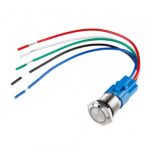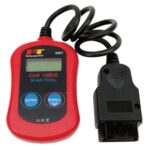For car owners and enthusiasts keen on vehicle maintenance, understanding the intricacies of the On-Board Diagnostics II (OBDII) system is crucial. The OBDII system is your vehicle’s self-diagnostic and reporting capability, particularly useful for emission control. One common query that arises when using an OBDII scanner is “AC Status Not Available.” But what does this mean, and how does it relate to your vehicle’s overall health? Let’s delve into this and also touch upon the importance of the OBDII drive cycle in ensuring your car’s system is properly assessed.
When your OBDII scanner displays “AC Status Not Available,” it essentially indicates that the diagnostic tool is unable to retrieve or display the status of your vehicle’s air conditioning (A/C) system from the engine control module (ECM) or related computer systems. This doesn’t immediately mean there’s a fault with your A/C, but rather, the communication pathway to access this specific data is currently obstructed or unavailable.
Several reasons can lead to an “AC Status Not Available” reading:
- Vehicle Specifics: Not all vehicles are designed to report detailed A/C status through the OBDII port. Some older models or specific makes might not have this feature implemented in their diagnostic protocols.
- Scanner Limitations: Basic OBDII scanners primarily focus on emissions-related data. A more advanced scanner with enhanced diagnostic capabilities might be required to access A/C system status, depending on the vehicle.
- Communication Issues: There could be a temporary glitch in the communication between the scanner and the vehicle’s computer system. This might be resolved by simply re-scanning or ensuring a solid connection.
- Underlying A/C System Fault (Potentially): In some cases, if the A/C system has a significant fault that affects its control system or sensors, it could indirectly lead to an “AC Status Not Available” message because the system is unable to provide a coherent status. However, this is less common than the other reasons listed above.
It’s important to understand that “AC Status Not Available” is not typically an error code itself, but rather an indication of data unavailability for that specific parameter.
Now, where does the OBDII drive cycle fit into this? The OBDII drive cycle is a sequence of driving conditions designed to allow your vehicle to run its onboard diagnostics comprehensively. This process ensures that all emission monitors are activated and can detect any potential malfunctions in your vehicle’s emission control system. While the drive cycle is primarily focused on emissions, it’s a fundamental aspect of OBDII system operation and readiness.
Here’s a generic OBDII drive cycle, which can be helpful in ensuring your vehicle’s monitors are set and that the OBDII system is fully functional for diagnostics, even if indirectly related to the “AC Status Not Available” message:
Generic OBDII Drive Cycle Procedure:
- Cold Start: Begin with a cold engine. The coolant temperature should be below 122 degrees Fahrenheit (50 degrees Celsius) and close to the ambient air temperature. Ensure the ignition has been off for several hours so the heated oxygen sensor diagnostic can run properly.
- Initial Idle: Start the engine and let it idle in drive for two and a half minutes. Turn on the air conditioning (A/C) and rear defroster if your vehicle is equipped with them.
- Moderate Acceleration & Cruise: Turn off the A/C and rear defroster. Accelerate moderately and smoothly to 55 mph (88 km/h). Maintain a steady speed of 55 mph for three minutes.
- Deceleration: Without braking or depressing the clutch (for manual transmissions), coast down to 20 mph (32 km/h).
- Second Cruise: Accelerate again to 55 to 60 mph (88-96 km/h). Maintain a steady speed between 55 and 60 mph for five minutes.
- Final Deceleration & Stop: Coast down to a complete stop without braking.
Important Considerations:
- Safety First: Always obey all traffic laws and drive safely when performing a drive cycle.
- Vehicle Specific Cycles: This generic cycle may not work for all vehicles. Consult your vehicle’s owner’s manual or repair information for the specific drive cycle recommended for your car model.
- Preconditions: Ensure all necessary preconditions for the drive cycle are met before starting the procedure.
While performing a drive cycle might not directly resolve an “AC Status Not Available” message, it’s a valuable procedure for ensuring your OBDII system is fully operational and that emission monitors are ready. If you consistently see “AC Status Not Available” and suspect an issue with your A/C system, it’s advisable to consult a qualified automotive technician. They can use professional-grade diagnostic tools to further investigate the A/C system and identify any potential problems beyond the scope of basic OBDII readings.
In conclusion, “Obdii Ac Status Not Available Meaning” typically points to a data retrieval issue rather than a direct fault. Understanding the limitations of OBDII scanners, vehicle-specific implementations, and the importance of procedures like the OBDII drive cycle are key to effectively diagnosing and maintaining your vehicle. When in doubt, professional diagnosis is always recommended for accurate assessment and repair.


